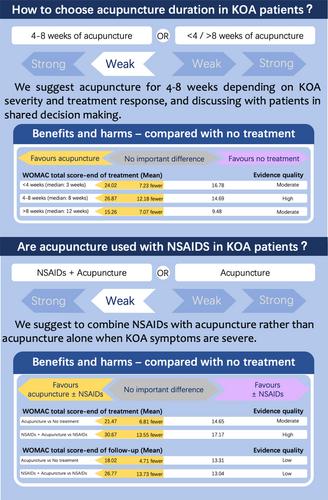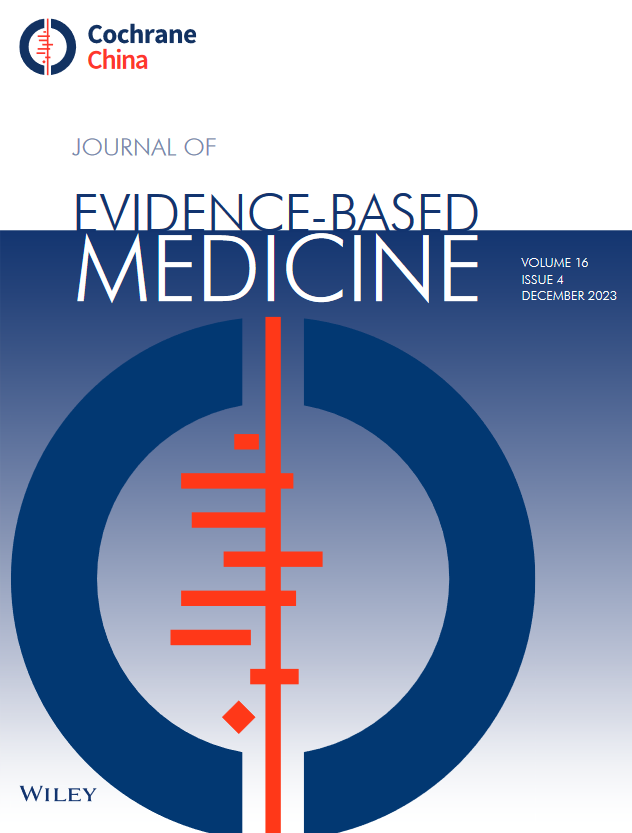Is acupuncture effective in treating knee osteoarthritis (KOA)?
Although increasingly used in the clinical setting, acupuncture is not mentioned or weakly recommended in guidelines for the treatment of KOA.
We suggest acupuncture rather than no treatment in adult KOA (weak recommendation, moderate certainty evidence), and acupuncture combined with nonsteroidal anti-inflammatory drugs (NSAIDs) rather than acupuncture alone when KOA symptoms are severe (weak recommendation, moderate certainty evidence), with duration of acupuncture for 4–8 weeks depending on KOA severity and treatment response (weak recommendation, moderate certainty evidence), and discussing with patients in shared decision-making.
This rapid recommendation was developed following the Making GRADE the Irresistible Choice (MAGIC) methodological framework. First, the clinical specialist identified the topic of recommendation and demand for evidence. Then the independent evidence synthesis group performed a systematic review to summarize available evidence and evaluate the evidence using the GRADE approach. Finally, the clinical specialist group produced recommendations for practice through a consensus procedure.
The linked systematic review and meta-analysis included 9422 KOA patients, 61.1% of whom were women. The median mean age was 61.8 years. Compared with no treatment, acupuncture had beneficial effect on KOA in improving the Western Ontario and McMaster Universities Osteoarthritis Index (WOMAC) total score (moderate certainty evidence), and WOMAC pain (very low certainty evidence), WOMAC stiffness (low certainty evidence), and WOMAC function (low certainty evidence) subscale scores. Compared with usual care, acupuncture improved WOMAC stiffness subscale score (moderate certainty evidence). Subgroup analyses showed different effects in the improvement of WOMAC total scores by different durations of acupuncture and whether acupuncture combined with NSAIDs, but no difference between manual acupuncture and electroacupuncture was found.
Compared with no treatment, acupuncture is suggested to reduce pain, stiffness, and disfunction in KOA patients, ultimately improving the patient's health status. Acupuncture can be used as an alternative therapy when usual care is ineffective or there are adverse reactions so that patients can no longer continue the treatment. Manual acupuncture or electroacupuncture is suggested for 4–8 weeks to improve the health status of KOA. The patient's values and preferences should be considered when selecting acupuncture for KOA treatment.



